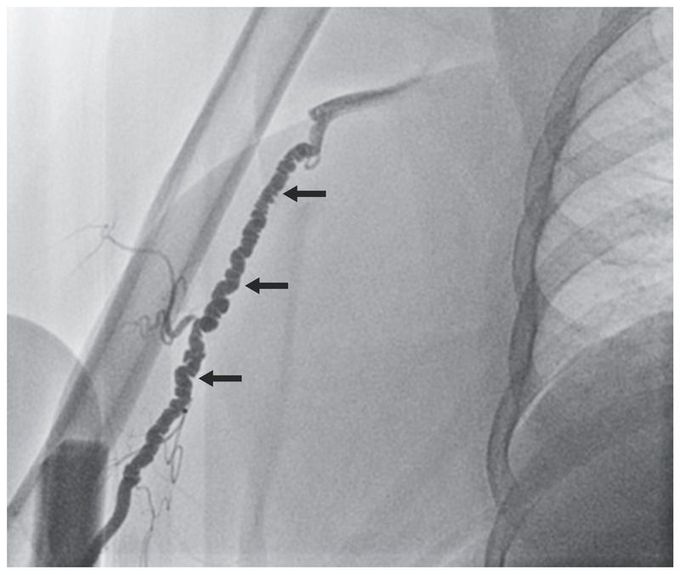


Fibromuscular Dysplasia of the Brachial Artery
A 68-year-old woman presented with exertional dyspnea and chest pain, symptoms that suggested unstable angina. She had undergone coronary-artery bypass grafting 5 years earlier. Vascular examination revealed palpable radial pulses on both sides of the body. The results of Allen’s test, conducted with the use of plethysmography, were normal. Transradial coronary angiography was attempted, but there was difficulty advancing the guidewire and diagnostic catheter past the level of the elbow. Right brachial angiography revealed a “string of beads” pattern (arrows) that was consistent with fibromuscular dysplasia, a noninflammatory, nonatherosclerotic disorder of the blood vessels. Fibromuscular dysplasia is most commonly seen in the carotid and renal arteries but has been observed in nearly every arterial bed. Although many patients are asymptomatic, some have symptoms related to the affected arterial bed, such as hypertension, renal failure, stroke, abdominal pain, or claudication of the legs. Coronary angiography was completed by means of the right femoral artery, which revealed no indication of fibromuscular dysplasia but did reveal stable coronary artery disease with patent bypass grafts. The patient’s chest pain resolved and was attributed to a noncardiac cause. She was discharged the next day, and there were no further sequelae.

